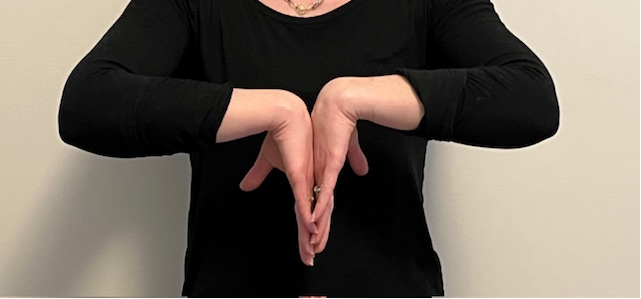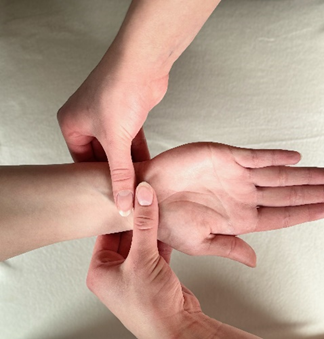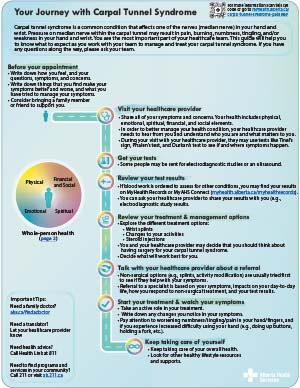Your healthcare provider will review your history of symptoms and what tends to make your symptoms better and worse. They may ask how often your symptoms happen, how long you’ve had them, and how severe they are. They may also ask how your symptoms impact the things you do every day, your job, your sleep, and the things you like to do.
There are many conditions that can contribute to carpal tunnel syndrome, like diabetes, arthritis, and hypothyroidism. Being pregnant can also cause carpal tunnel syndrome symptoms. Talk with your healthcare provider about your overall health to help them identify and manage any other conditions, which may help with your carpal tunnel symptoms.
Assessments your healthcare provider may do
Examination of your arm, wrist, and hand
- Your healthcare provider can tell a lot by asking about your symptoms and looking at your arm, wrist, and hand.
- They will look for any injuries, underlying conditions that may be causing your symptoms, and any signs that need follow up, like changes in the muscle at the bottom of your thumb.
Tinel’s sign
- Your healthcare provider will tap firmly on the area on your wrist over the median nerve to see if symptoms happen and where they happen.
- Your healthcare provider will discuss the Tinel’s sign test results with you right away.
Phalen’s test
- Your healthcare provider will ask you to put the backs of your hands together. This increases the pressure in the carpal tunnel (the narrow space in your wrist that the median nerve passes through). They will ask you what symptoms you feel during the test.
- Your healthcare provider will discuss the Phalen’s test results with you right away.

Phalen’s test
Durkan’s test
- This test is also called the carpal compression test or the median compression test.
- Your healthcare provider will apply pressure over the median nerve area on your wrist to see if symptoms happen and where they happen.
- Your healthcare provider will discuss the Durkan’s test results with you right away.

Durkan’s test
Other things to tell your healthcare provider
You are the most important part of your healthcare team. Tell your healthcare provider about the impact the carpal tunnel symptoms are having on the things that are important to you, like your job, hobbies and interests, and relationships. Tell them what activities make your carpal tunnel symptoms worse and what has worked for you in the past to manage your carpal tunnel syndrome.
Making the most of your appointment
If you don’t understand what your healthcare team is telling you, let them know right away. Be open and honest. You might say:
- “It sounded like you said that I should… Did I understand that correctly?”
- “Can you show me a picture or model to help me understand?”
Learn more about
working with your healthcare team and
making the most of your appointment.

Carpal Tunnel Syndrome Pathway
Download or print the
full patient pathway (PDF) and
summary (one-page PDF) to learn more about how to manage and treat Carpal tunnel syndrome.
Patient Pathway  Summary
Summary 
